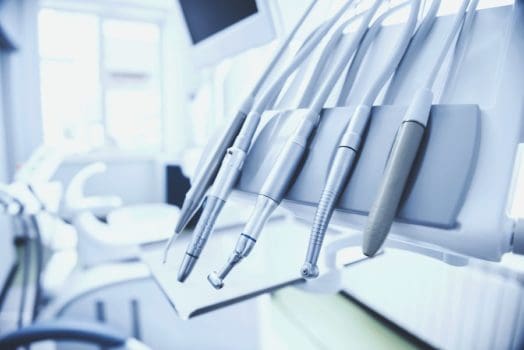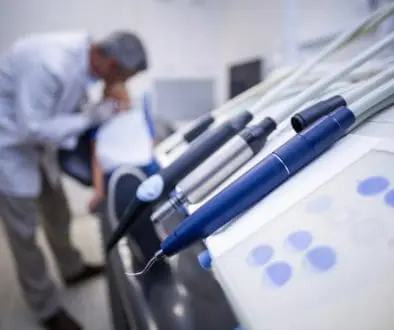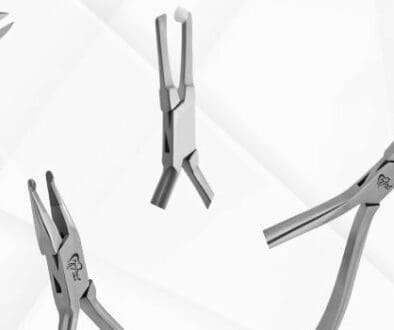The Benefits of Washer-Disinfectors vs Ultrasonic Cleaners in the Dental Office

Over the years, the use of washer-disinfectors for cleaning dental instruments before sterilization has increased significantly. This makes it more important for a comprehensive dental washers-disinfectors vs. ultrasonic cleaners comparison.
Why?
Washer-disinfectors don’t clean as efficiently as an ultrasonic cleaner. Cleaning chemicals can be too aggressive for maintaining long-term instrument functionality which is why we recommend ultrasonic cleaning machines.
Washer-disinfectors are medical-grade dishwashers that blast dirt and debris off instruments to the standards required by the American Dental Association: using a high-intensity spray system. They also have the capability to thermally disinfect the instrument load before moving to the sterilizer.
In this article, we’ll provide all you need to know for a dental washer-disinfectors vs ultrasonic cleaners comparison.
Your Complete Guide to a Dental Washer-Disinfectors vs. Ultrasonic Cleaners Comparison
Benefits of Ultrasonic Cleaners
Ultrasonic cleaning machines are highly effective at cleaning both organic and inorganic materials from even the deepest nooks and crannies in instruments and other items like air turbine handpieces. They have been used in automated cleaning procedures for over 50 years.
Ultrasonic equipment works by producing high-frequency sound waves in an immersion tank, creating enormous energy (cavitation) that translates to a very efficient cleaning process with superior penetrating power.
Ultrasonic cleaning machines are manufactured with transducers that operate at different frequencies ranging from 20-40 kHz. The higher the frequency, the finer the bubbles and the more intricate the pieces that can be efficiently cleaned.
The ultrasonic cleaners have different tank capabilities and sizes ranging from 1 gallon to 6 gallons, so it’s easy to find one to meet the needs of your individual practice.
Our most popular units include:
BioSonic Ultrasonic Cleaner UC150-1.75 gallons
DuraSonic DS4L Ultrasonic Cleaner
Prestige Medical Classic 2100 Autoclave
Pros and Cons of Washer-Disinfectors
As part of our dental washer-disinfectors vs ultrasonic cleaners comparison, we’ll turn now to washer-disinfectors and what makes them different.
Washer-disinfectors depend on liquid spray as the method for removing dirt and debris. If parts of instruments are not exposed directly to the spray, they may not get cleaned. Placing instruments in cassettes that block the spray can exacerbate this issue.
To compensate for these shortcomings, extremely powerful chemicals are used to facilitate the removal of bioburden and dirt. A popular European washer solution uses an alkaline cleaning agent so intense that it requires an acidic rinse to neutralize the items being cleaned.
This is a “double whammy” for the materials used in orthodontic instrument manufacture, resulting in increased degradation of these tools.
Typical formulations used in washer-disinfectors have a pH range of 11-12. Although there are solutions with as high a pH as 13, these chemicals can be overkill when we look at the actual bioburden on orthodontic instruments.
The primary benefits of washer-disinfectors are:
- They can handle a large capacity of instruments
- They have a fully automated cycle
- They result in reduced instrument handling
- They can include thermal disinfection from 176 to 194 degrees Fahrenheit (80 to 90 degrees Celsius)
Before Purchasing a Washer-Disinfector
In our dental washer-disinfectors vs. ultrasonic cleaners comparison, there are some important things you should consider before you buy washer-disinfector equipment.
Remember, it doesn’t clean as efficiently as an ultrasonic machine, and the cleaning chemicals used can be too aggressive for maintaining long-term instrument functionality.
If you are sold on the idea of a newer, more automated technology, it’s important to:
- Get safety data sheet (SDS) information
- Check the ingredients in the formula
- Ask your peers about the experiences they have had with a specific product
- Call your plier manufacturer for advice before you commit to a chemical cleaning agent that could potentially damage your instrument inventory
- The cleaning and sterilization process puts enough stress on your pliers and instruments under ideal conditions without introducing a new range of chemical challenges to your procedure.
Dental Washer-Disinfectors vs Ultrasonic Cleaners: Which Should You Choose?
When it comes to cleaning dental instruments, ultrasonic cleaners are considered superior to washer-disinfectors.
Ultrasonic cleaners use high-frequency sound waves to create cavitation bubbles that clean and remove debris from all surfaces of the instruments, including the deepest nooks and crannies.
On the other hand, washer-disinfectors depend on liquid spray to remove dirt and debris, which may not effectively clean areas that are not directly exposed to the spray.
Additionally, washer-disinfectors often use extremely powerful chemicals that can be overkill for the actual bioburden on orthodontic instruments and may lead to increased degradation of these tools.
Overall, ultrasonic cleaners provide a more efficient and thorough cleaning process for dental instruments.
Diatech Offers an Extensive Selection of Ultrasonic Cleaners Perfect for any Dental Practice
Upgrade your dental practice’s cleaning and sterilization process with the superior power of ultrasonic cleaners from Diatech. Our ultrasonic cleaning machines use high-frequency sound waves to effectively remove even the toughest dirt and debris from your instruments, providing a deeper clean than traditional washer-disinfectors.
Plus, with a range of transducer frequencies and customizable cycle options, you can find the perfect machine to fit your practice’s unique needs.
See why our customer service and stellar reputation have made us one of the most well-respected suppliers in the business.





